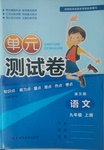
Sitting on exercise balls brings more than a smile to students and teachers.
Some fourth-graders at Conrad Weiser West Elementary School in Womelsdorf love their new chairs-—probably because they're not really chairs at all.
The kids are sitting on the air-filled balls. But different from those just for exercise, these have small legs that keep them from rolling. Sitting on a chair all day in school can make anyone want to move around. So, more and more teachers are letting students have a ball. By using exercise balls instead of common chairs, teachers find students' posture(姿势) and attention improved.
Dotti Pownall, a fifth-grader teacher in West Virginia, has been using balls as chairs since December 2008. "The students love them." she says. Pownall took a survey of her students. She found that 80 percent, thought sitting on the balls helped them concentrate(专注) better:
"Besides, they’re fun,b" says Pownall.
According to WittFitt,b a company that has sold balls to more than 200 schools, they can improve kids' posture and classroom behavior.
Exercise ball chairs are getting popular in classrooms, from preschool to college. Some adults (成人) even use them at work.
Lisa Witt felt so strongly about the use of balls as chairs that she started WittFitt. She said the company not only encourages the use of balls but also educates teachers and students on how to use them. "We sell balls in 24 states in America, three provinces in Canada and Japan." says Witt.
【小题1】Sitting on exercise balls can______.
| A.improve students' attention | B.make students smarter |
| C.keep students moving around | D.help students become fit |
【小题2】According to the passage, the company WittFitt______.
| A.began to produce balls in 2008 | B.sells balls in 24 countries |
| C.was set up by Lisa Witt | D.is famous around the world |
【小题3】It can be seen from the passage that ______.
| A.exercise balls have no legs | B.Pownall works as a teacher |
| C.students hate exercise balls | D.exercise balls are filled with sand |
【小题4】The passage mainly tells us about______.
| A.the shape of exercise balls | B.the use of exercise balls |
| C.the number of exercise balls | D.the inventor of exercise balls |

 阳光试卷单元测试卷系列答案
阳光试卷单元测试卷系列答案